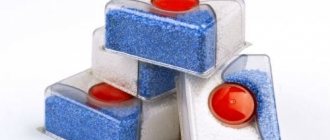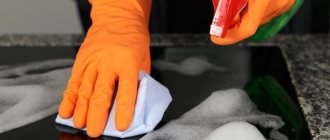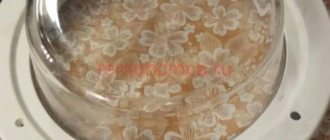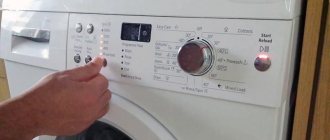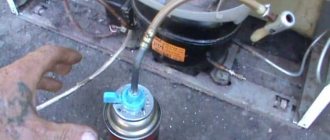Modern household appliances allow people to keep their home clean and comfortable with a minimum of effort. A dishwasher is one of the devices that helps the housewife save time and energy, control water consumption and not worry about harm to the skin of her hands from aggressive detergents. But what to do when the dishwasher can no longer cope with its duties and does not wash dishes well.
Let's understand the possible sources of the problem and solve the problem. The article is relevant for most PMM models: Ardo / Ardo, Beko / Beko, Bosch / Bosch; Candy / Kandy, Gorenje / Gorenje, Electrolux / Electrolux, Euronova / Euronova, Haier / Haer, Hotpoint Ariston / Hotpoint Ariston, Indesit / Indesit, LG / Eldzhi, Miele / Miele, Samsung / Samsung, Smeg / Smeg, Whirlpool / Whirlpool, Vestel / Vestel, Zanussi / Zanussi, Siemens / Siemens, Neff / Neff, Hansa / Haesa, Aeg / Aeg, Ikea / Ikea, Atlant.
Incorrect operation
Often the reason for a decrease in the efficiency of the device is improper operation. Many consumers do not consider it necessary to read the instructions of the manufacturer of household appliances and follow its recommendations, but in vain. Factors such as improperly stacking dishes, not closing the door properly, or loading items that are not dishwasher safe can cause unsafe operation. For example, cloudy drops and stains on the walls of glass glasses and cups, dark, yellow, colored (rainbow) stains or rust and even breakage.
Not certified detergent
Often, the accompanying documentation specifies requirements for the use of certain brands or types of detergents. A general rule for all models (Hansa, Hotpoint Ariston, Beko, Electrolux, Gorenje, Indesit, Kaiser, Korting, Whirlpool, Miele, Ikea) is the prohibition of adding non-specialized household chemicals (for example, ordinary gel, which is used when washing by hand) when starting the device ).
Do not skimp on purchasing tablets, powder and rinse aids for PMM; the cleanliness of the dishes and the service life of the device directly depend on the quality of the products.
If you purchased the same product, but the dirt became harder to wash off, you may have come across a counterfeit product.
Incorrect dosage
In order to save their personal budget, many housewives try to reduce the amount of detergent used, which leads to a sad result: the dishwasher stops washing the items loaded into it. Try to follow the dosage so as not to start another cycle due to dirty stains and food debris.
Irregular filter cleaning
Lack of systematic filter cleaning worsens the quality of PMM operation. The main causes of contamination are considered to be food residues on loaded dishes, accumulations of poorly washed off fat, limescale and hard water deposits. To eliminate this problem, it is necessary to clean the mechanisms with special means or improvised methods (for example, a mixture of soda with table salt, citric acid). To avoid such situations in the future, clean the filter systematically (at least once every 2 weeks), and also add softening liquids when starting the cycle.
Consequences of intensive use
Poorly washed dishes may be caused by an incorrectly selected regime. If household items are heavily soiled, choose a more intensive and longer program at high temperatures. If you just need to rinse the utensils, do not run a high-temperature cycle: use the economy mode.
Frequent use of a home dishwasher significantly reduces its service life, and an incorrectly selected program causes overload of the water heater and circulation pump. Do not overload the device: if it is designed for 6 sets, do not put more items into it.
Incorrect installation of equipment
Incorrect installation of household appliances and incorrect connections (for example, location at the wrong drain level or poor water pressure) sometimes leads to disastrous results. To correct the situation, reinstall the device correctly.
Malfunctions affecting the quality of dishwashing
The machine may not wash kitchen utensils well because one of its parts is malfunctioning. The following breakdowns can lead to this :
- The electric heater has burned out or the integrity of its circuit is broken. Cold water will not wash dishes. Usually in these cases the PMM stops working and shows an error code on the display (for example, E01 for Bosch).
- Failure of the temperature sensor can also cause problems with water heating.
- A malfunction of the circulation pump leads to the fact that the liquid is not supplied to the sprayers and does not wash the dishes.
- If the sprayer impeller is broken, then water cannot be distributed throughout the chamber, and accordingly, the quality of washing is reduced.
- If there is a failure in the specified PMM operating program, the consequences may be different, for example, refusal to heat the water or insufficient rinsing (instead of two cycles - one).
Instantaneous electric heater in the dishwasher
Each of the above breakdowns can be quickly corrected by a specialist from the service center. But the probability of such malfunctions is much lower than user errors during the operation of the PMM. Read the instructions carefully, use only those detergents that are intended for dishwashers, and then the machine will not stop washing dishes perfectly.
External reasons
Hard water
Hard water contains a lot of dissolved minerals - limestone, chalk, gypsum, various impurities, which adversely affect the efficiency and service life of the PMM. During operation of the device, salts dissolve and then precipitate on the internal surfaces of the device, which leads to deterioration in the operation of the mechanisms. To combat the effects of hard water, many manufacturers equip their products with a hardness level regulator that needs to be monitored. If such a function is not available in your household appliances, you should add special softening solutions (Calgon or analogues) at startup.
The opposite situation happens - cups and plates become “soapy” slippery to the touch, this happens due to very soft water.
Low water pressure
Cloudy stains on dishes may appear due to low pressure in water pipes. Typically, such situations arise in houses that are provided with water from an autonomous source, including wells.
Household chemicals are poorly washed out from household items and leave behind contaminants; the tablets do not have time to dissolve because the volumes of rinse liquid are insufficient. To normalize the pressure, it is recommended to clean the pipes and filters, and, if necessary, install an additional pump in the home water supply system.
Option 5. Sprinkler
Another reason why the machine may not wash dirty dishes well is that the water sprayer is clogged. The main function of the sprinkler, as the name implies, is to spray water evenly along the entire contour of the PM.
So, the water at the sprinkler comes out through special holes, which over time become clogged with food debris. The result is a decrease in water pressure and, as a consequence, a deterioration in the “washability” indicator.
What to do in this case. It's simple. We remove the sprinkler (this is very easy to do) and wash it under running tap water. Put it back and enjoy the result. And for the future, remove leftover food from the plates before putting the dishes in the sink. Then your sprinkler will clog much less often.
Internal reasons
The circulation pump is broken
The circulation pump pumps water into the internal compartment of the PMM. Due to problems with this important part, the fluid supply may be blocked. The failed part must be replaced with a new one, otherwise the PMM washing program will simply stop turning on.
Sprinkler impeller does not rotate
The impeller is an element of the mechanism due to which the rocker arm with sprinklers rotates. If the part does not work well, the water is distributed unevenly and the dishes are poorly washed. Diagnostics and repairs should be entrusted to professionals.
Heating element burnt out
The thermoelectric heater heats water to the desired temperature. It is on this structural element that most often a large amount of scale accumulates. If it is not removed in a timely manner, the service life of the part is significantly reduced and it quickly burns out. Sometimes the metal cracks and holes appear in the insulation, and the PMM body begins to shock.
At low temperatures, dishes are very difficult to rinse, and the washing powder leaves traces.
Temperature sensor failure
We measure the temperature sensor of the water entering the dishwasher (all models of the companies have them: Bosch, Ariston, Electrolux, Veko, Virpul, Ikea, Indesit, Siemens, Hansa). The thermal relay receives the specified information and transmits it to a specialized electronic module, which, in turn, gives the command to carry out heating.
In the event of a breakdown, the transmitted information is unreliable or is not transmitted at all, and washing is done in cold water. The quality of washing is significantly reduced. In this case, the sensor needs to be replaced.
The control module is glitchy
The control module is the “brain” of the PMM, thanks to which commands are sent to all nodes of the device. Due to incorrect operation of the software board, the sequence of processes (draining, heating, etc.) and their duration fail. With such a problem, you should contact the service center to reflash or replace the module.
Turbidity sensor gives incorrect readings
A water turbidity controller, as a rule, is available only in expensive premium equipment (Bosch, Siemens). The aquasensor determines the degree of contamination and reacts even to small particles of dirt, launching an additional rinse cycle or adding water. When the sensitivity of the sensor decreases (for example, due to scale), the performance of the PMM deteriorates.
The ion exchanger has exhausted its resource
As a rule, the ion exchanger does not break, but consumables in it can run out of resources - granules of levatite ion exchange resin, which allow water to be regenerated. To restore the functionality of the part, it is necessary to replace the ionized resin in the container with a new one.
Option 6. The water supply hose is pinched
It also happens that in the process of moving the machine (well, it was in your way, and you decided to move it), the water supply hose was pinched or kinked. Or maybe the corrugated hose was initially connected incorrectly. As a result, water begins to flow poorly into the system and there is not enough for a full washing cycle.
More: Repairing an Electrolux dishwasher, error codes
How to wash plaque
Often, mugs, plates and spoons leave a white residue on them after washing in the dishwasher, or it is not possible to remove brown residue from tea and coffee. There is no need to panic: this problem can be solved on your own.
Traditional methods
There are several inexpensive ways to determine the causes of white plaque formation. The most popular is the use of ordinary vinegar. You should drop the acid onto the glass and monitor the reaction. If dissolution occurs, it means the water is too hard. If not, then the reason lies in the leftovers on plates and utensils of fatty foods with a high protein content. You can soak mugs and other containers with plaque in a vinegar solution (but not metal products - pots, pans, knives) for 20 minutes and then rinse with warm water or add citric acid (essential oils of eucalyptus, tea tree) when starting the cycle.
You can get rid of dark plaque with baking soda.
Professional products
The market offers a wide range of liquids for removing plaque and scale, for example, Finish, Soda Sun, Somat. When working with household chemicals, take care of the skin of your hands: wear rubber gloves and thoroughly ventilate the room after cleaning.
Option 4. Incorrect placement of dishes in the washing basket
Also, the “washability” is directly affected by the correct placement of dishes in the basket. If the laying is too dense, detergents, rinse aid and water will not reach each individual plate or cup.
The upper basket, as a rule, is loaded with light and small dishes, such as cups, plates, spoons and forks. Glasses and glasses are placed upside down on special holders.
In turn, the lower basket is designed for storing heavy and dirty dishes, such as pots, pans, large plates and dishes. Pay attention to the holders that are found in almost every dishwasher model. They can be folded back freely and thus increase the useful volume of the basket.
The main causes of dishwasher malfunctions
The main cause of breakdowns, of course, can be the age of the equipment. If the machine has served you for more than 5 years, then you shouldn’t expect it to wash dishes well. This happens due to wear and tear of spare parts and improper care of the equipment.
A dishwasher is a technically complex product and requires proper maintenance.
But very often the question arises, “Why did the dishwasher begin to wash dishes poorly?” just a couple of days or weeks after purchase:
- If you bought a cheap Chinese model, then you can find low-quality assembly in it, as well as its spare parts;
- Poorly rinsing food from dishes before loading them into compartments. A bad wash can also be caused by the fact that not all machines can cope with very dirty plates. Therefore, you have to wash it yourself;
- A trivial but common situation is a faulty socket;
- The reason for poor performance of equipment may also depend on the use of poor detergent. Usually it does not wash dishes or washes them too poorly;
- Before turning on the dishwasher, you need to check that the door is closed. It may not hold or simply not be fixed;
- Improper loading of dishes also plays a big role. The result will be poor cleaning of the top shelf or the bottom. Before loading dishes into the dishwasher, you should carefully read the instructions or at least turn to the Internet for help. You will find information everywhere that the plates should be on top, and the bottom should be filled with large pans, and glasses and cups should only be placed upside down.
Dishes don't wash well
The dishwasher may not cope with its tasks for a number of reasons, including:
- incorrect placement of dishes in the chamber;
- device overload;
- incorrect choice of washing program;
- errors in the selection of household chemicals;
- lack of car maintenance;
- technical issues.
To find out why the equipment washes poorly, it is necessary to diagnose it. For this purpose, most models provide a special program. The error code displayed on the panel can be deciphered using the user manual. There you will also find troubleshooting solutions.
Possible breakdowns
If the dishwasher suddenly begins to wash dishes poorly, the cause of the problem may be hidden in a serious breakdown that needs to be repaired in a timely manner. The following instructions will help you figure out which part has stopped functioning properly:
- The heating element burned out - this is a special electric heater that ensures timely heating of water. Due to the fact that it is constantly in contact with water, scale accumulates on it. Failure to remove it leads to breakdown of the heating element - it often burns out without any possibility of restoration or repair. If the reason is the electric heater, the water in the dishwasher does not heat up, which means that all the dishes remain greasy.
- The sprayer impeller has stopped working - this element is designed to spray water in order to clean all the dishes as much as possible. If the impeller does not work, it means that the water does not reach all surfaces, and the load remains unwashed.
- The water turbidity sensor has burned out - the presented system is available in modern models of the corresponding equipment. The system works by transmitting the quality of the water to the module - if it is considered cloudy, washing should be continued, which is determined automatically. If the system fails, then there is no turbidity detection and the machine automatically decides to end the cycle when the program time has expired.
- The recirculation pump has broken down - in this case, the equipment will not start working, since there is no water supply during the presented breakdown.
- The thermal relay burned out - this system is a transmitter to the heating element about the supply of water in the machine. At a certain moment, the thermal relay signals the start of its operation and heating occurs. If the system is not working, the heating element does not turn on and does not heat the water.
The dishwasher may work poorly or stop altogether due to an error in the control module. In this case, the system does not give commands, which is why water is not collected or heated. The presented breakdown requires serious repair with the involvement of a special programmer.
If the reason for dirty dishes or a white residue after washing in the dishwasher is the breakdown of any element, you should call a professional. A specialist will immediately determine the cause and the out-of-use part. If necessary, he will immediately carry out a replacement, and you will be able to use the equipment in the near future.

